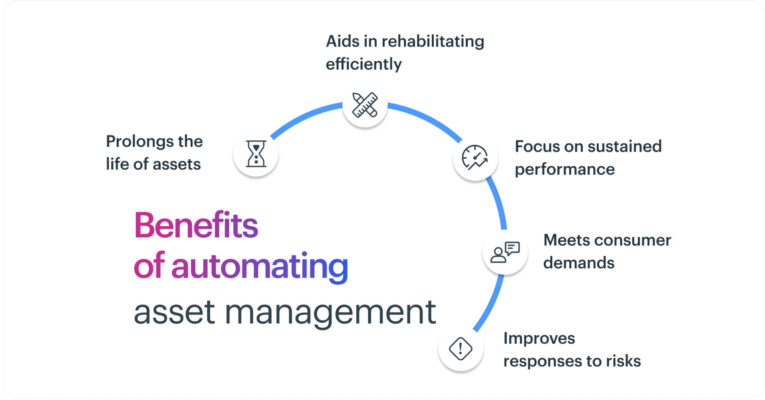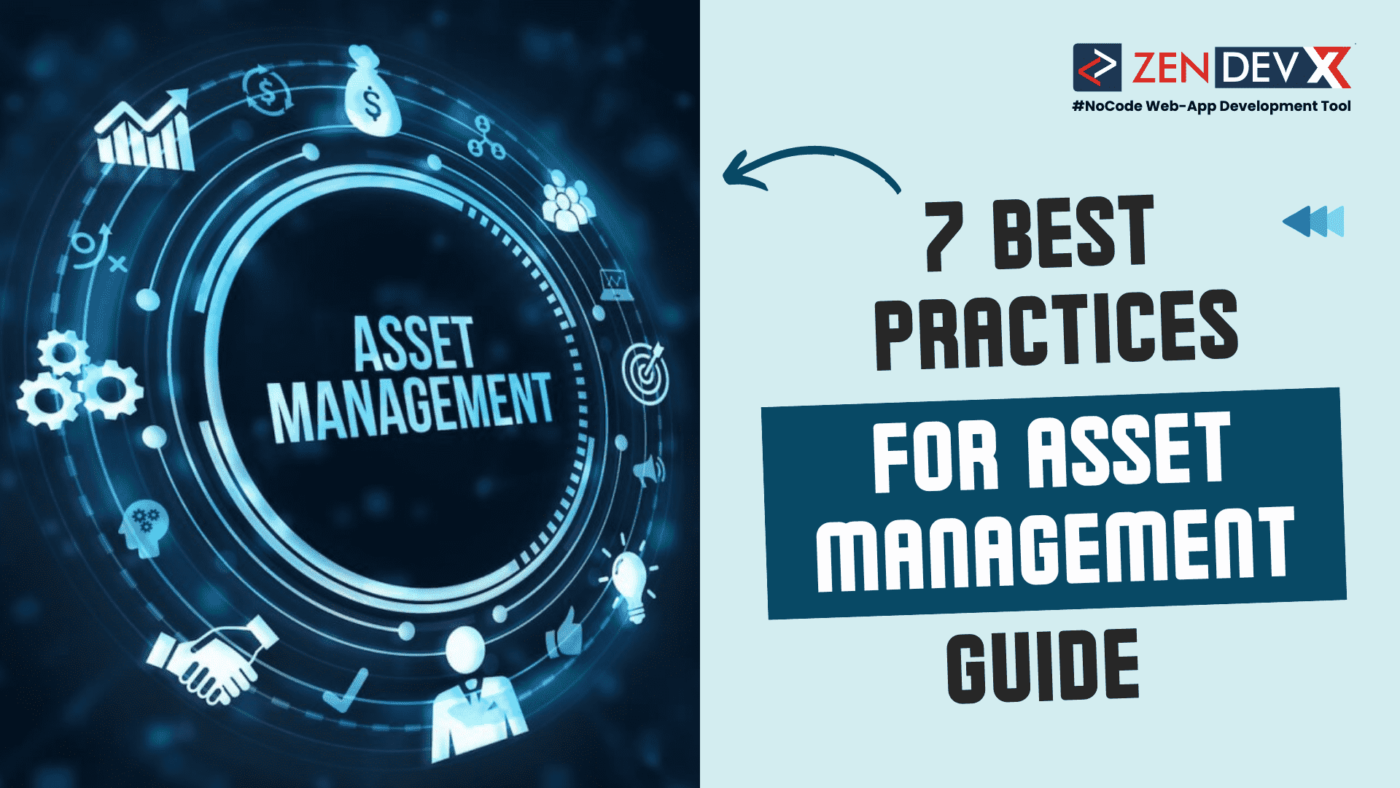What is Asset Management ?
The process of procurement, operation, maintenance, renewal, and disposal of organizational assets—that is, asset management—is planning and managing them. This operation improves asset supply possibilities and lowers the related risks and costs. Appropriate use of systems, people, and procedures along with sufficient maintenance guarantees good development of capital during the asset lifetime.
What is the Lifetime of Assets ?
The asset lifespan is the total number of phases an asset travels under during its lifetime of ownership. It is the period of time a corporation may effectively and fast use an asset to accomplish its goals in business. Usually spanning the whole life of an item from procurement to upkeep and last disposal, an asset lifecycle.
Categories of Asset Control
Every organization has a different idea about asset management, but they may be basically divided as contractual, financial, and physical.
- Physical Asset Management: Fixed asset management, inventory control, infrastructure, and public asset management.
- Financial Asset Management: Management of procurement, development of an investment strategy, budget and cost control, handling of cash, bonds, and stocks.
- Contractual Asset Management: Management of intangible assets, digital asset management, contractual maintenance, and IT asset management.
Issues with Managing Business Assets
Among the key issues asset management deals with is the difficulty of tracking and regulating current assets manually. Years of having your assets on the grid could cause compromised or worse loss.
Apart from this puzzle, handmade asset management faces the following declared problems:
- Manual data input, error-ridden processes, and erroneous information
- Disjointed asset control system
- Lack of authority to apply rules on asset control
- Insufficient or nonexistent change management
- Minimal to no tracking and reporting of real-time asset position and value in order to assess the prospective data risk or halt it
7 Values Guiding Effective Asset Management
Good asset management systems help businesses to methodically monitor and manage their assets. Companies can raise the efficiency and output of an asset by means of a powerful process, so enhancing the return on improvement.
Essential components of a good asset control system consist of:
1. Making an asset register—a list of all the easily accessible assets.
2. Listing the used rating system and asset conditions.
3. Tracking asset decay exactly at set intervals.
4. Determining the worth of the assets along with their replacement cost.
5. Shifting from reactive to predictive asset management.
6. Ensuring database integrity by focusing on change management.
7. Simplifying documentation and automating tasks including data collecting, asset reporting, and more.
How Could Asset Management be Improved ?
If the process itself is simply average at best, then installing an asset management system will not produce any results. Simplifying their present asset management systems is therefore absolutely necessary before looking for ways of process automation.
A corporation should focus on seven aspects to bring asset management into the future:
-
Know the Fundamental Reason Behind Asset Existence
- For what purposes does this asset find application?
- Why was it obtained?
-
Find Out How the Item is in Condition
- Right now, the asset is in what state?
- How much does it fulfill its stated purpose?
- Is dependability somehow related to it?
-
Discover the Asset’s Level of Effective Application
- The asset delivering currently has what worth?
- Is it in line with current standards?
-
List Forthcoming Requirements
- Will the expectations of services evolve?
- Is the asset sufficient to satisfy needs ahead?
-
Review the Present Maintenance Plan
- How may the asset’s lifetime be preserved and improved?
- The success of the present asset maintenance program
- Does the estimate of maintenance costs represent reality?
-
Project Rate of Decrease and Accompanying Risks
- Is the routinely used object under investigation constant?
- Are the expectations very different from historical forecasts?
- Does the depreciation charge for following years vary accordingly?
- From this devaluation, what effects follow?
-
Forecast Asset Deletion
- When should the asset be essentially off-used permanently?
- Does the indicated asset in the financial statement cause either gain or loss?
The Benefits of Automating Asset Management

Smart businesses avoid spending time trying to manually do monotonous asset management tasks using the same outmoded approach over and again. Investing in asset management applications allows businesses to free administrative teams to focus more on value-added projects by automating labor-intensive and time-consuming asset management chores.
Still, adopting an asset management system is a huge decision, so it’s advisable to be sure of the definite benefits before you start. Good tools for asset management:
- Extend the lifetime of your investments
- Aid in rapidly repairing, replacing, and substituting assets
- Satisfy client needs with an eye on system sustainability
- Enable one to focus on activities essential for continuous performance
- Facilitate businesses in meeting legal requirements and service standards
- Improve responses to risks or unexpected occurrences
5 Popular Tools for Asset Management :
You should decide on the suitable asset management system once you understand its benefits. The perfect asset management system does not exist; so, you have to select the suitable asset management tool depending on your specific needs.
Starting your search would be ideal from the five well-known asset management tools below.
1. ServiceNow
Designed particularly for companies, ServiceNow offers a range of asset management capabilities like resource tracking, inventory control, financial and contractual information management, and more. The all-encompassing asset management platform offered by ServiceNow will enable businesses to avoid having to switch between specialist products for any given HR need.
- Pros: Simple usage, a consolidated asset database, and customized reporting.
- Cons: Starting with matching all asset entitlements and contracts can be somewhat time-consuming and challenging.
2. Operations Cloud Finance
Not a completely administrative-automation platform, this is a finance cloud you might use to perform basic operating chores including asset management, facilities management, and more. It is a simple and powerful financial and operational cloud available to businesses of all sizes.
- Pros: Flexible, simple interface and consistent user experience across devices.
- Cons: No pre-defined templates; basic process designs; dashboards.
3. ERP Suite in SAP
SAP early gave business asset management little thought, so the product had major feature defects. Now, though, it has evolved to be a complete suite of company asset management tools appropriate for any industry. SAP’s key advantage comes from everything from materials to assets and costing being easily handled in one place.
- Pros: Active user community, rich functionality, and deep knowledge of services.
- Cons: The maintenance schedule tool lacks both adaptability and industry standards compatibility.
4. Maximo from IBM
Apart from other complementary tools for procurement and inventory control, Maximo is an end-to-end asset management system with a major capability: extensive maintenance module. Effective integration of the product encourages a well-connected asset management system.
- Pros: Future vision, product strategy, and functional capacity.
- Cons: Clunky user interface; issues with spatial add-in; mobile app bugs.
5. E-Business Suite Oracle
Oracle E-Business Suite offers all the solutions for handling asset management. The program provides graphically rich reporting capacity for stakeholders so they may create a tailored analysis report. REST API or SOAP connectors allow businesses to connect with several apps.
- Pros: Flexible, simple interface and consistent user experience across devices.
- Cons: The upkeep expenses are simply very expensive.
Effective asset management determines the performance of any company; this is especially relevant for infrastructure assets with long lifetime spans and significant capital outlay since they will provide a basis of economic activity. The more complex the organization is, the more valuable a robust asset management system becomes.
Although hand asset management methods can get the job done, personnel will have to manually wrinkle and iron out a lot of things to ensure their firm makes the most of the offered assets. Using an asset management system enables businesses to carry out their asset management plans and readily govern their assets.
Choose an asset management system that not only makes asset management easier but also extends their lifetime so they function economically and effectively if you are seeking the perfect one.


